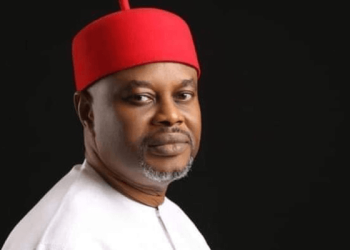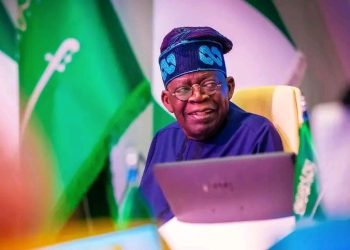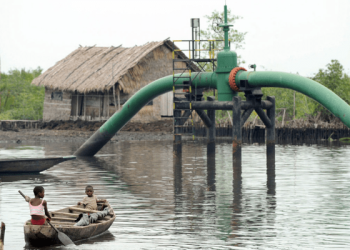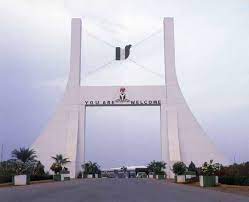The renewed interest by manufacturers in effectively accessing state-backed intervention funds is timely. Coming at a time that the 36 states and the Federal Government are struggling to pay their workers, it should focus attention on how to revitalise the manufacturing sector as a major driver of economic growth and job creation.
Olobayo identified three funds, totalling N720 billion designed by the Federal Government to stimulate industrialisation that should be utilised. We join MAN in calling for a proper, effective management of all interventionist funds to ensure that they achieve the objectives of expanding domestic production, creating jobs and boosting exports. The three – the N300 billion Industrial Fund, the N320 billion Micro, Small and Medium Enterprises Development Fund and the N100 billion Cotton Textile Garment Intervention Fund – are not even known to many manufacturers, according to MAN, much less accessing them. This is a major challenge for the government’s policymakers and the organised private sector. For too long, state-funded stimulus funds have found their way into the wrong hands and failed serially to achieve any meaningful purpose.
In an economy where lending rates average 22 per cent, special funds offered at nine per cent ought to be a game-changer for industry. Stakeholders should therefore critically examine why these funds have failed to deliver and work out effective policy implementation measures to make Nigeria an industrialised economy.
Enormous potential for growth exists in Nigeria’s manufacturing sector, according to an assessment by the United Nations Development Programme. One is the vast arable land – 82 million hectares of the country’s total 91 million hectares – of which just about 40 per cent is under cultivation, according to Akinwunmi Adesina, the immediate past Minister of Agriculture and current president of the African Development Bank. Another is the large pool of labour and a ready market in a population of 170 million of which 53.2 per cent were, by 2010, between the ages of 15 and 65, the economically active age bracket.
Progressive countries realise that manufacturing has a multiplier effect and in some cases, one sub-sector leads to the growth of others. India, China and South Korea deliberately promoted the heavy industry and automobile sectors because of their influence on mining, iron and steel and petrochemical industries, besides their capacity to create millions of jobs down the value chain. At its peak, Nigeria’s textile sector employed about 350,000 hands directly and many more indirectly in ancillary industries, as well as providing thousands of jobs for cotton farmers. Crucially, manufacturing stimulates start-ups and small scale enterprises that typically, provide the bulk of blue-collar jobs and products.
But beyond state-backed intervention funds, the Buhari government needs to address other deep malaises. A report by Renaissance Capital, the global investment bank, identified smuggling, dumping of goods from China and poor fiscal policies as impediments to manufacturing growth in Nigeria. The government needs to streamline its policies and launch a programme of industrialisation using fiscal, monetary and administrative policies. This will involve ending the massive corruption and strengthening institutions to deliver on set objectives. This will, for instance, eliminate the estimated N1.4 trillion lost to waivers, concessions and duty exemptions in six years with very little benefit to the economy; help in realising the objectives of the export processing/free trade zones; ensure effective management of intervention funds, and revive strategic, jobs-boosting sub-sectors like mining, steel, textiles, food and beverages and vehicle assembly, among others.
Instructively, manufacturers have been resilient in the face of adverse operating conditions. Its contribution to Gross Domestic Product rose to 10 per cent by 2014, up from a low 3.9 per cent a few years ago, says the National Bureau of Statistics, while MAN reported an increase in average capacity utilisation from 46.3 per cent in the first half of 2013 to 52.7 per cent in the second half of that year. This is a far cry from the less than 35 per cent average utilisation of previous years when staff layoffs and factory closures defined the sector. Where producers depend on alternative sources for electricity, contend with multiple taxes and levies, insecurity and high borrowing rates and difficulty in securing foreign exchange to import raw materials, machinery and parts, this is remarkable.
In assembling his economic management team, President Muhammadu Buhari should set job creation, export diversification and domestic production as the three-fold objectives of all policies and programmes and implement them with an iron resolve. Such single-minded pursuit of national objectives has seen the evolution of Singapore’s industry from a labour-intensive sector to a research and knowledge-based one with electronics and precision electronics as its lodestone, contributing 30 per cent to GDP, according to a report by The Economist of London. China’s industrial sector hit 44.4 per cent of GDP by 2011 after years of robust policy initiatives.
Efforts should be geared towards achieving a single-digit borrowing rate since not all manufacturers, especially the small and medium scale producers, can access interventionist funds. The target area of growth should be SMEs that account for 60 per cent of Singapore’s industrial products.
In the meantime, there should be a strong collaboration between the OPS, the government and banks to ensure optimal deployment, and repayment, of the intervention funds.
The renewed interest by manufacturers in effectively accessing state-backed intervention funds is timely. Coming at a time that the 36 states and the Federal Government are struggling to pay their workers, it should focus attention on how to revitalise the manufacturing sector as a major driver of economic growth and job creation.
Olobayo identified three funds, totalling N720 billion designed by the Federal Government to stimulate industrialisation that should be utilised. We join MAN in calling for a proper, effective management of all interventionist funds to ensure that they achieve the objectives of expanding domestic production, creating jobs and boosting exports. The three – the N300 billion Industrial Fund, the N320 billion Micro, Small and Medium Enterprises Development Fund and the N100 billion Cotton Textile Garment Intervention Fund – are not even known to many manufacturers, according to MAN, much less accessing them. This is a major challenge for the government’s policymakers and the organised private sector. For too long, state-funded stimulus funds have found their way into the wrong hands and failed serially to achieve any meaningful purpose.
In an economy where lending rates average 22 per cent, special funds offered at nine per cent ought to be a game-changer for industry. Stakeholders should therefore critically examine why these funds have failed to deliver and work out effective policy implementation measures to make Nigeria an industrialised economy.
Enormous potential for growth exists in Nigeria’s manufacturing sector, according to an assessment by the United Nations Development Programme. One is the vast arable land – 82 million hectares of the country’s total 91 million hectares – of which just about 40 per cent is under cultivation, according to Akinwunmi Adesina, the immediate past Minister of Agriculture and current president of the African Development Bank. Another is the large pool of labour and a ready market in a population of 170 million of which 53.2 per cent were, by 2010, between the ages of 15 and 65, the economically active age bracket.
Progressive countries realise that manufacturing has a multiplier effect and in some cases, one sub-sector leads to the growth of others. India, China and South Korea deliberately promoted the heavy industry and automobile sectors because of their influence on mining, iron and steel and petrochemical industries, besides their capacity to create millions of jobs down the value chain. At its peak, Nigeria’s textile sector employed about 350,000 hands directly and many more indirectly in ancillary industries, as well as providing thousands of jobs for cotton farmers. Crucially, manufacturing stimulates start-ups and small scale enterprises that typically, provide the bulk of blue-collar jobs and products.
But beyond state-backed intervention funds, the Buhari government needs to address other deep malaises. A report by Renaissance Capital, the global investment bank, identified smuggling, dumping of goods from China and poor fiscal policies as impediments to manufacturing growth in Nigeria. The government needs to streamline its policies and launch a programme of industrialisation using fiscal, monetary and administrative policies. This will involve ending the massive corruption and strengthening institutions to deliver on set objectives. This will, for instance, eliminate the estimated N1.4 trillion lost to waivers, concessions and duty exemptions in six years with very little benefit to the economy; help in realising the objectives of the export processing/free trade zones; ensure effective management of intervention funds, and revive strategic, jobs-boosting sub-sectors like mining, steel, textiles, food and beverages and vehicle assembly, among others.
Instructively, manufacturers have been resilient in the face of adverse operating conditions. Its contribution to Gross Domestic Product rose to 10 per cent by 2014, up from a low 3.9 per cent a few years ago, says the National Bureau of Statistics, while MAN reported an increase in average capacity utilisation from 46.3 per cent in the first half of 2013 to 52.7 per cent in the second half of that year. This is a far cry from the less than 35 per cent average utilisation of previous years when staff layoffs and factory closures defined the sector. Where producers depend on alternative sources for electricity, contend with multiple taxes and levies, insecurity and high borrowing rates and difficulty in securing foreign exchange to import raw materials, machinery and parts, this is remarkable.
In assembling his economic management team, President Muhammadu Buhari should set job creation, export diversification and domestic production as the three-fold objectives of all policies and programmes and implement them with an iron resolve. Such single-minded pursuit of national objectives has seen the evolution of Singapore’s industry from a labour-intensive sector to a research and knowledge-based one with electronics and precision electronics as its lodestone, contributing 30 per cent to GDP, according to a report by The Economist of London. China’s industrial sector hit 44.4 per cent of GDP by 2011 after years of robust policy initiatives.
Efforts should be geared towards achieving a single-digit borrowing rate since not all manufacturers, especially the small and medium scale producers, can access interventionist funds. The target area of growth should be SMEs that account for 60 per cent of Singapore’s industrial products.
In the meantime, there should be a strong collaboration between the OPS, the government and banks to ensure optimal deployment, and repayment, of the intervention funds.












































